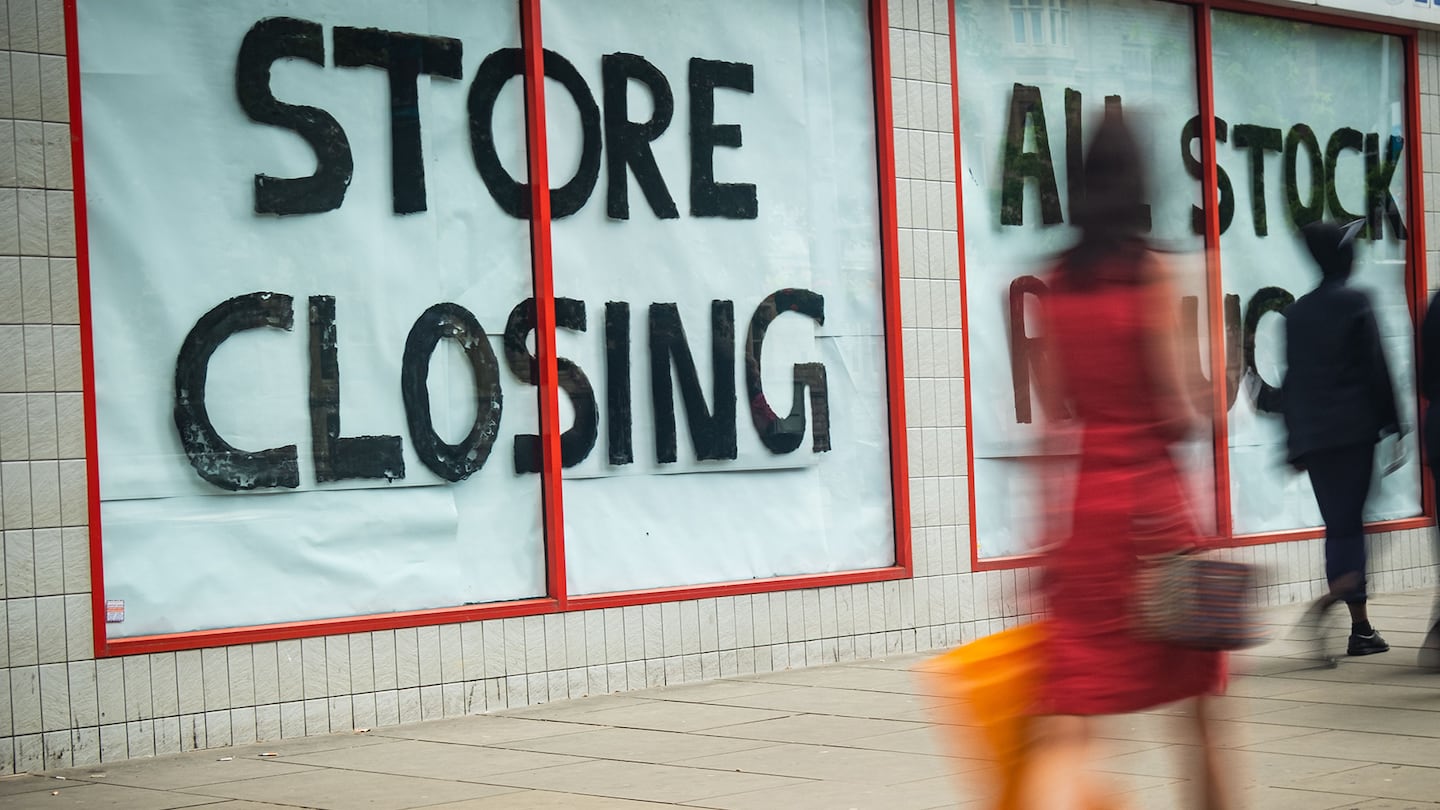
The Business of Fashion
Agenda-setting intelligence, analysis and advice for the global fashion community.

Agenda-setting intelligence, analysis and advice for the global fashion community.

The New Originals was on a hot streak last year, until it ran into the buzzsaw of inflation.
The preppy, streetwear-inflected label doubled its revenue in 2022. Then its manufacturer in Turkey hiked prices: the cost of making the Amsterdam label’s hoodies, joggers and other items jumped. For T-shirts which used to cost €10 ($11) to produce, the brand was now being quoted €16 ($17.50) per unit.
Plenty of brands in the same situation simply hike prices, passing along the extra manufacturing costs to consumers. But The New Originals didn’t want to alienate its young consumer base, who were also seeing their cost of living rise. Instead, the founders found a new factory in Turkey that could produce the same clothes at a lower price.
Going forward, the brand will check each season whether it’s getting the best possible prices from its suppliers to be as profitable and efficient as possible, said co-founder Rizky Lasahido.
ADVERTISEMENT
“This … was a blessing in disguise,” said Lasahido. “It was the first step we took as a young brand to getting some control over our supply chain.”
Between inflation and sluggish consumer spending, the nuts and bolts of running a fashion business are more important than ever for small fashion brands. These companies have fewer options to fall back on when they hit a rough patch: High interest rates make borrowing less attractive, and investors aren’t as willing to back emerging labels.
That means it’s time to get pragmatic and look inward at each aspect of their business to figure out how to stretch their capital just a little further.
It’s a fraught process that often plays out in full view of consumers. To save cash, brands are switching to cheaper materials and to countries where labour costs are lower. Labels are stocking fewer styles and pushing cheap-to-produce trends like matching sets and “essentials” collections. They’re pickier about which retailers to work with, and opening fewer of their own stores.
Even then, success is not guaranteed; the failure rate for emerging fashion brands is high in the best of times. But methodically eliminating non-critical outgoings is a must in order to safeguard profitability.
“There is no secret sauce — it’s simply the somewhat unsexy, but obvious focus on preserving cash to see the business through this lean period,” said Stefano Martinetto, co-founder of London-based brand accelerator, Tomorrow. “The mentality shift required is to focus on what is essential versus what is nice-to-have.”
For Estonian womenswear designer Johanna Parv, the key to preserving cash was knowing how not to spend it.
Sales at her eponymous London-based label tripled over the last 12 months. For a young brand — Parv, has no full-time employees and staged her debut show through London Fashion Week’s Fashion East in February 2023 — the temptation is to add staff and turbocharge growth.
ADVERTISEMENT
But Parv said she knows a lean team can make decisions more efficiently, and that the brand’s money is better invested into equipment, future collections or special projects. She has plenty of evidence to support her way of thinking: In recent months, fashion businesses such as Ssense, Gymshark and The RealReal that grew their workforce during the pandemic boom have announced layoffs.
“It’s about keeping your organisation lean,” Martinetto added. “Question who — and what — is essential to carry the brand through this phase.”
Emerging brands reliant on wholesale are especially at risk of running out of funds because of the frequent delay between a production order and payment. It’s typical for labels to have to wait up to three months for payment of a wholesale order after making the delivery of a collection. Brands spend a lot of time chasing invoices as they prepare for next season’s production.
To help save on such production costs, designers can reduce the number of items produced per collection to focus on key, top-selling styles. Shelving non-core products can boost profitability, driving down a collection’s overall cost of production because the more popular items are typically produced in bulk, while also making it easier to manage inventory.
Reducing inventory is the best way to safeguard against the current economic climate, said Jennie Rosén, chief executive of the Swedish Fashion Council, who advises start-up labels through the council’s incubator programme.
“[It’s] moving away from the traditional model where brands are plagued by overproduction and excessive stock … ensuring there’s always bigger demand than supply,” she added.
Johanna Parv — like many young designers — is wary of wholesale deals that don’t pay deposits to fund production in advance of receiving a collection or that don’t meet her minimum order stipulations. Passing up on wholesale orders will mean leaving money on the table, but it’s a safer way to ensure a fashion business operates within its means.
Being discerning has led to fruitful partnerships — which include deposits paid up front and good product placement in-store and online — with the retailers she has onboarded, such as Dover Street Market Ginza and Matchesfashion, Parv said.
ADVERTISEMENT
“If a store is willing to meet my minimum [order value], they pay me a deposit, they make a nice selection and are willing to present my brand respectfully … then we are good to go,” she said.
UK-based menswear brand Represent has also hit the brakes on the pace of its wholesale expansion to focus on maximising income from key retail doors, said founder George Heaton.
In recent months the brand has seen sales accelerate thanks to opening sleek, attention diverting shop-in-shops at key retailers like Selfridges, End and Flannels to promote its Spring/Summer 2023 collection.
“We’re ensuring that we are as compelling and engaging for consumers wherever we show up, whether that’s online, at pop-ups or through physical retail partners,” Heaton said.
Other brands are introducing new price points to drive sales. Last week, London-based designer Priya Ahluwalia released “Unison”, a more affordable ready-to-wear line through her namesake label — the average price of main line ready-to-wear items is £500 ($623), compared to Unison items which range from £80 to £150. The designer said she hopes this will boost profitability by creating products that cost less to manufacture and can be sold in higher volumes than the intricate, hand-produced tailoring and knitwear that makes up the brand’s main line.
“The capsule is one of several strategies — along with greater investment in our DTC channel — to diversify our income and attract a wider consumer base,” Ahluwalia said.
Ultimately, to make the most out of cash, brands need to do whatever they can to protect the bottom line.
“Entrepreneurialism is as much about business fundamentals as it is creativity,” Martinetto said. “The brands that will come through this period strongest will be those that focus on keeping the balance between these two sides.”
Emerging labels can catch the eyes of inundated buyers through savvy pitching, leveraging relationships with celebrity fans and compelling social-media profiles.
Small stores can remain competitive by scaling their private labels, testing new store concepts, and offering brands consumers can’t find on Farfetch or in Selfridges.
In an uncertain economic environment, brands are turning to their customers for investment. BoF unpacks how companies can benefit from this approach typically favoured by start-ups.

Daniel-Yaw Miller is Senior Editorial Associate at The Business of Fashion. He is based in London and covers menswear, streetwear and sport.
The British musician will collaborate with the Swiss brand on a collection of training apparel, and will serve as the face of their first collection to be released in August.
Designer brands including Gucci and Anya Hindmarch have been left millions of pounds out of pocket and some customers will not get refunds after the online fashion site collapsed owing more than £210m last month.
Antitrust enforcers said Tapestry’s acquisition of Capri would raise prices on handbags and accessories in the affordable luxury sector, harming consumers.
As a push to maximise sales of its popular Samba model starts to weigh on its desirability, the German sportswear giant is betting on other retro sneaker styles to tap surging demand for the 1980s ‘Terrace’ look. But fashion cycles come and go, cautions Andrea Felsted.